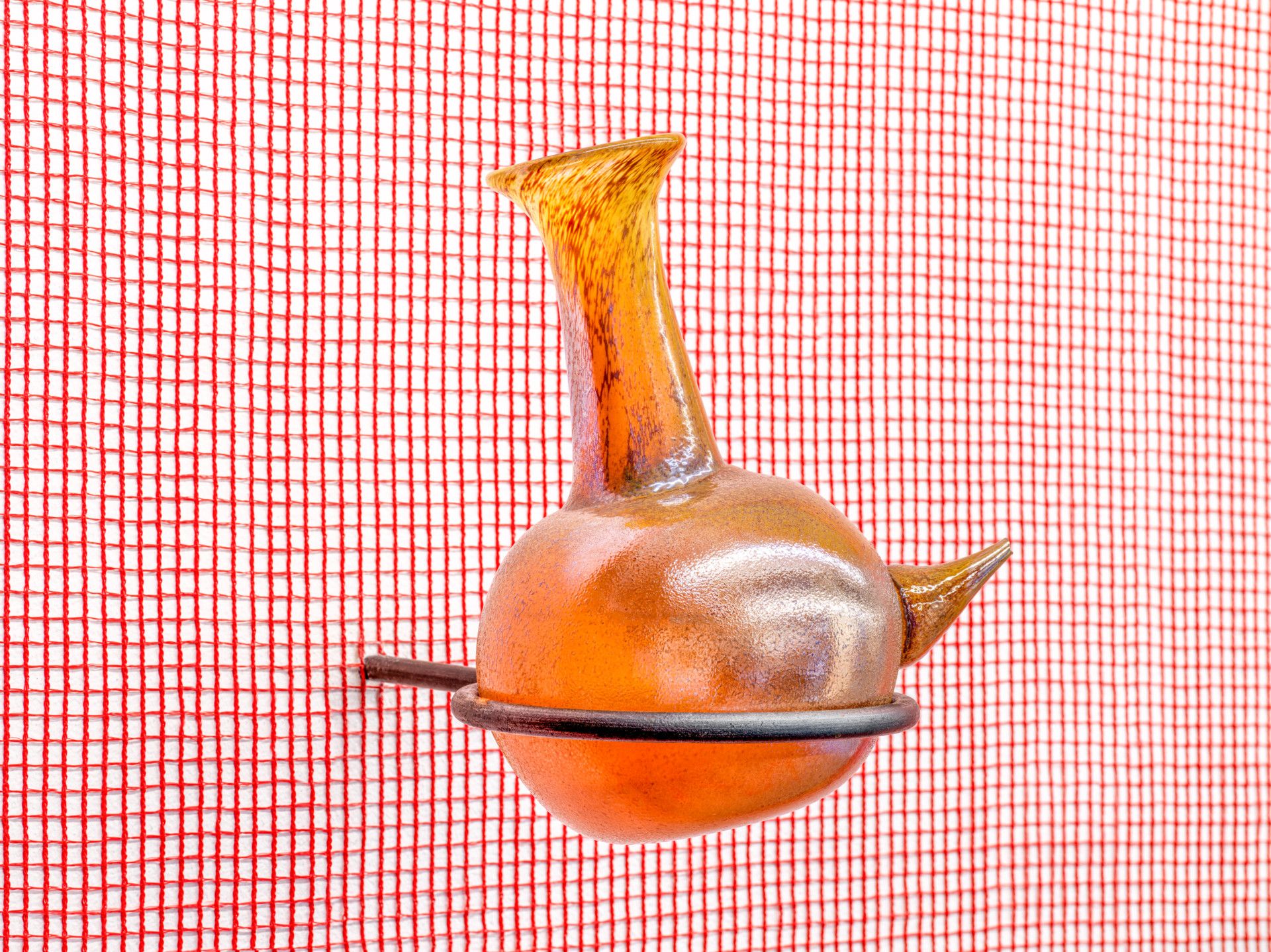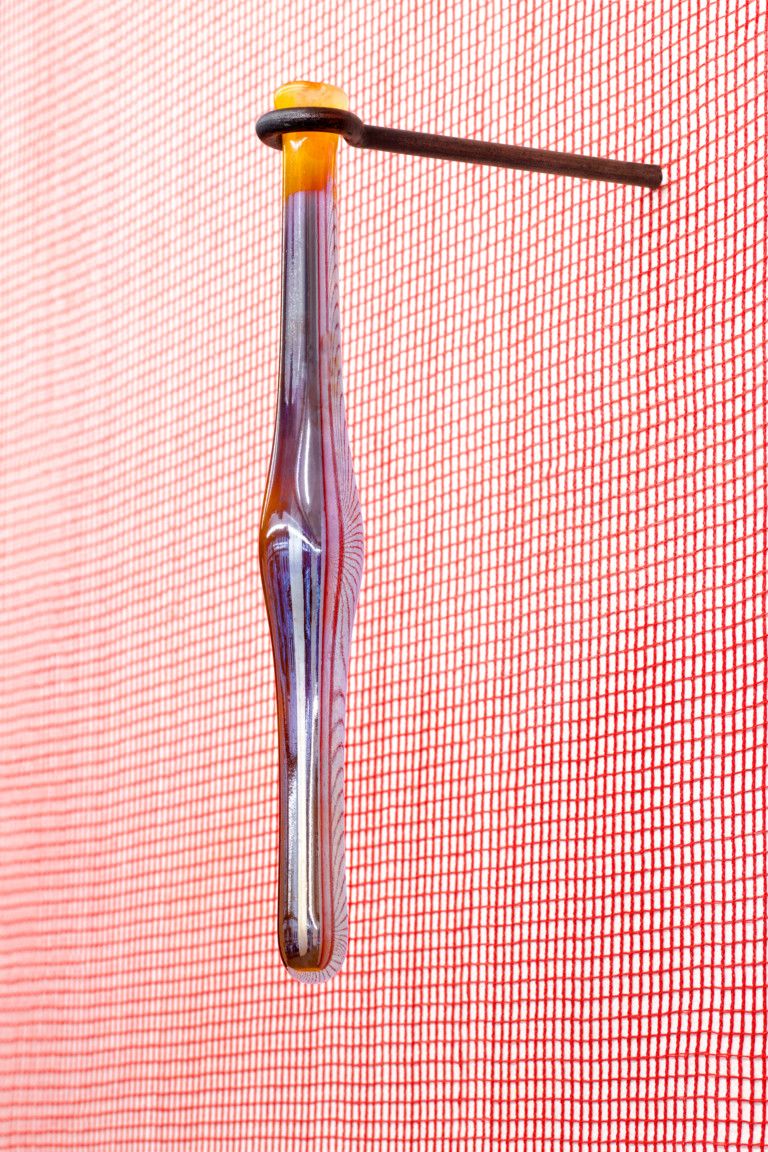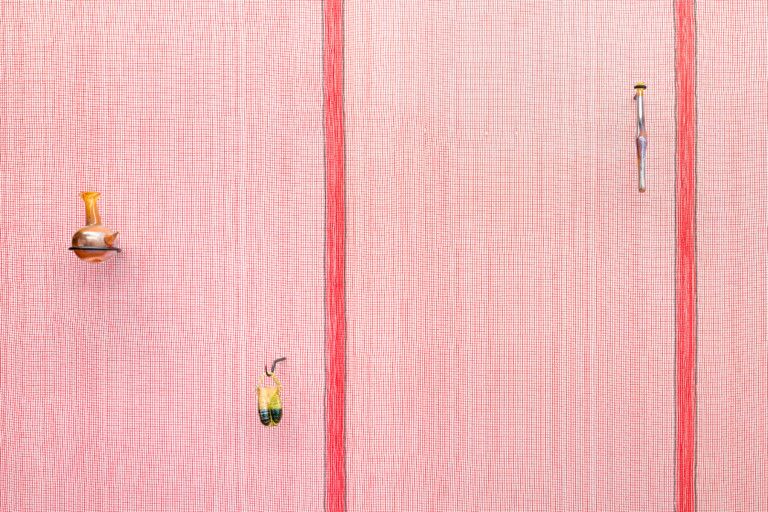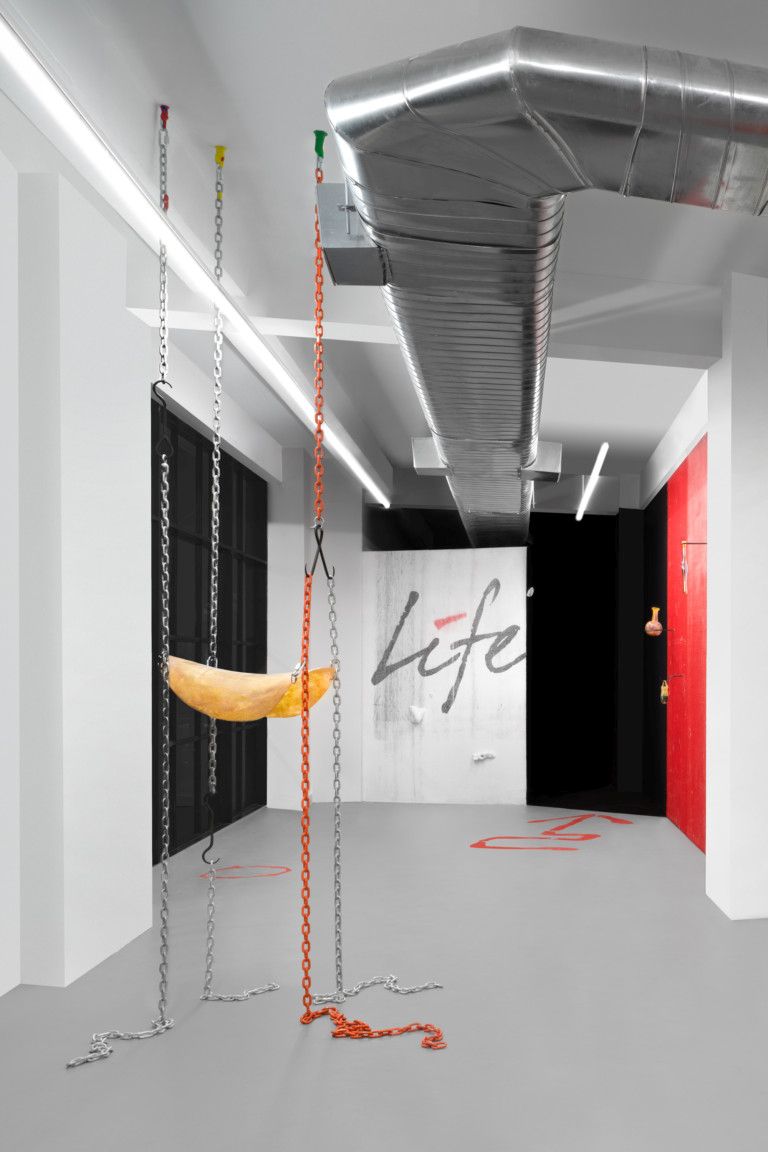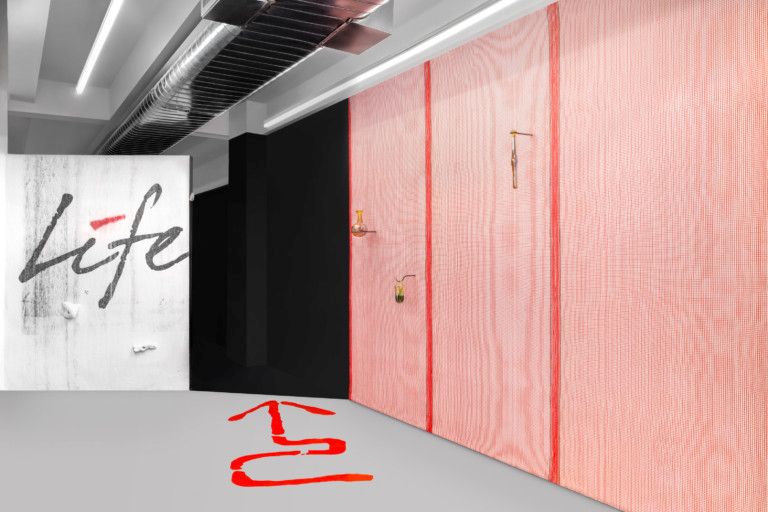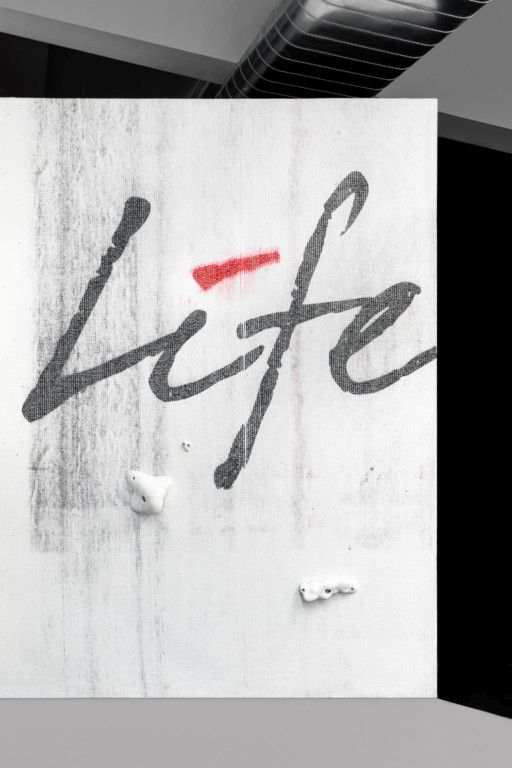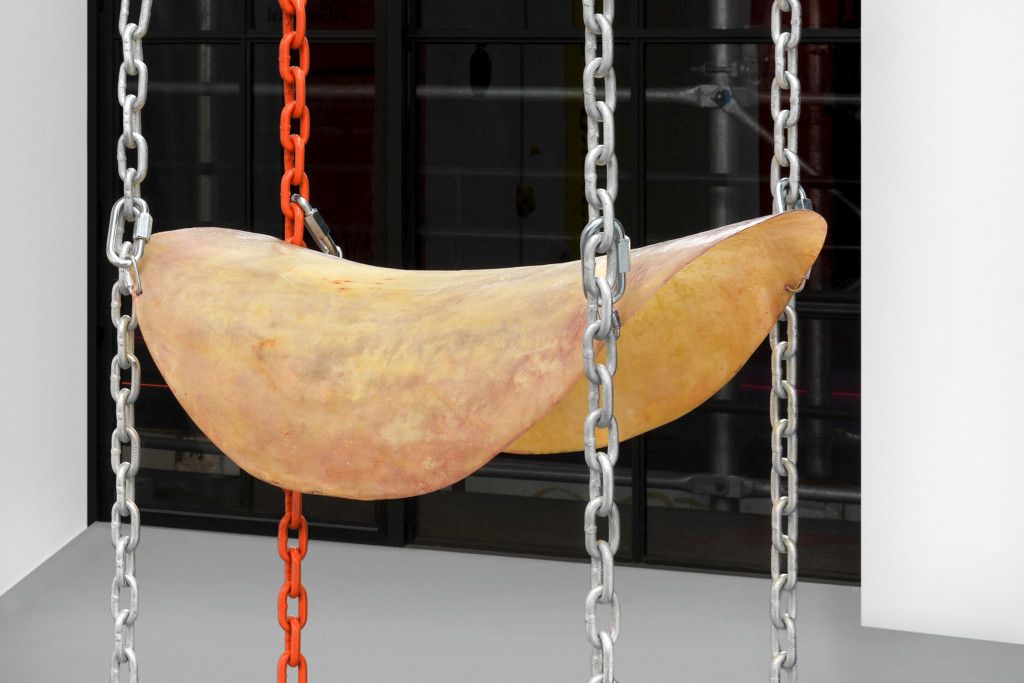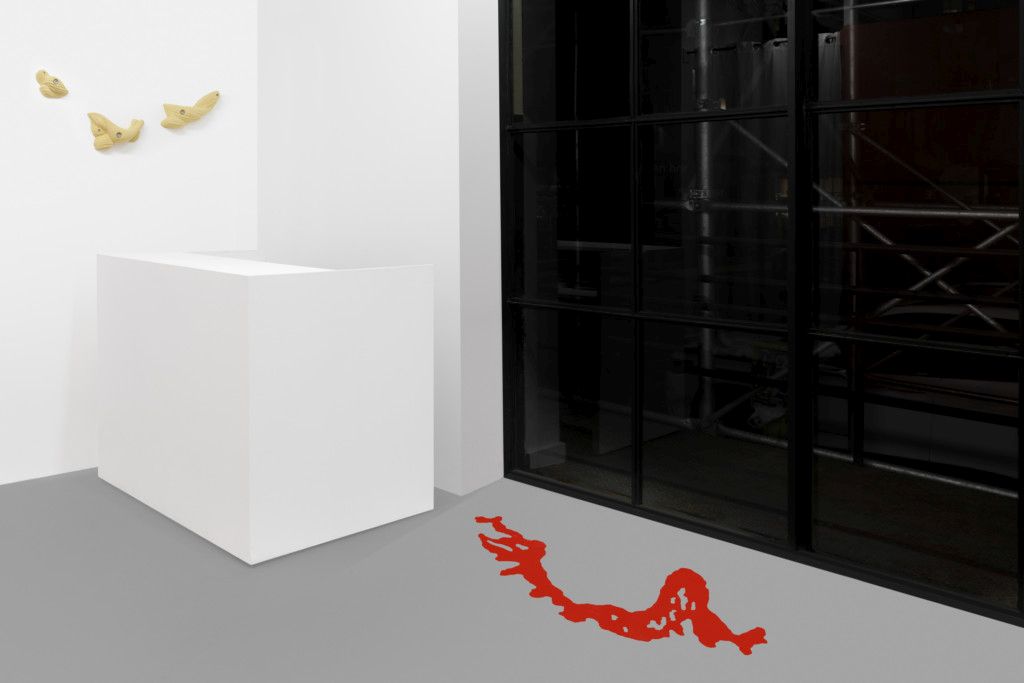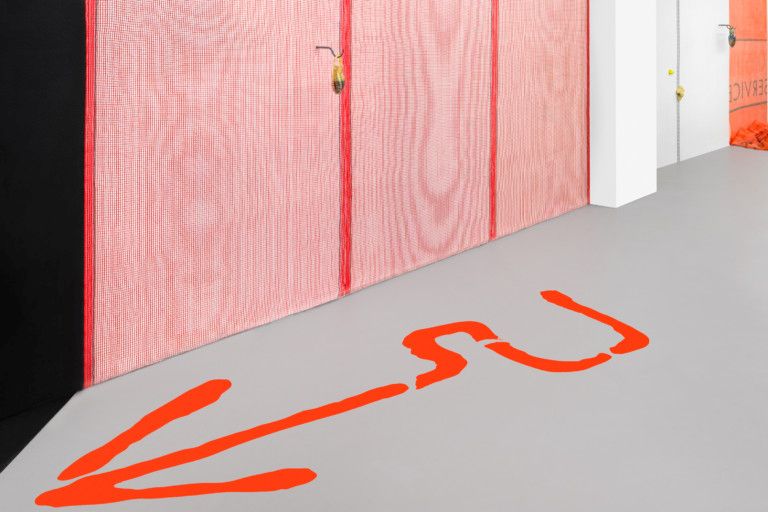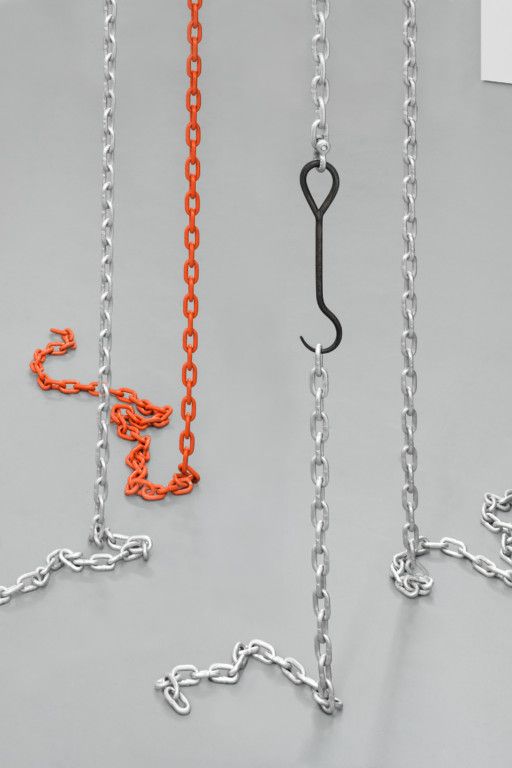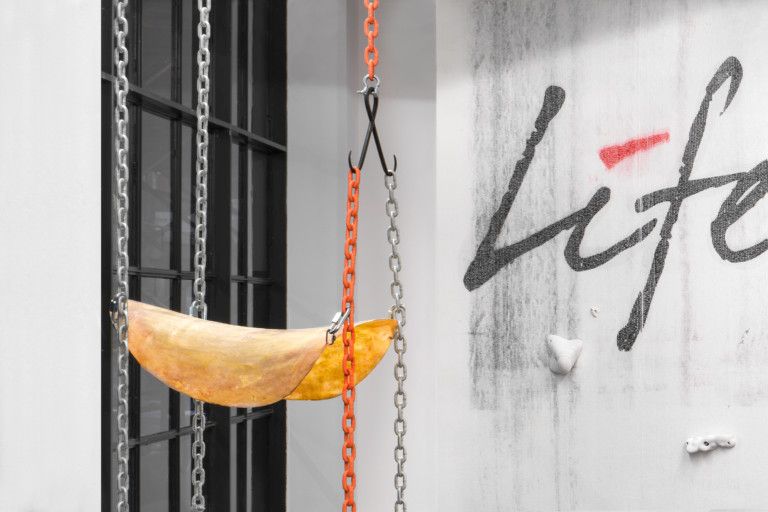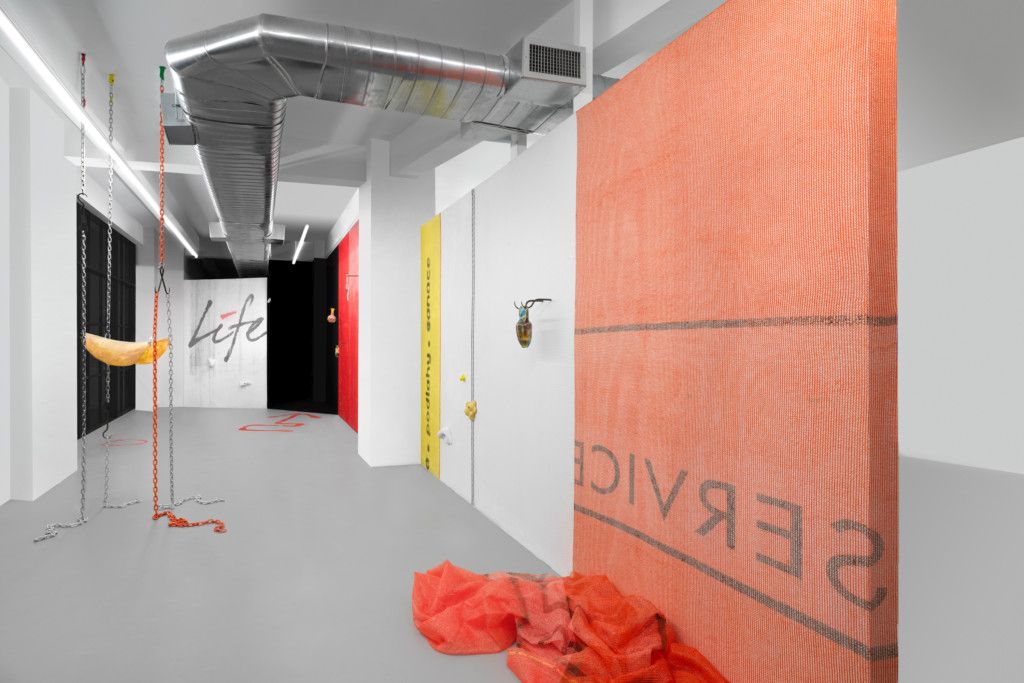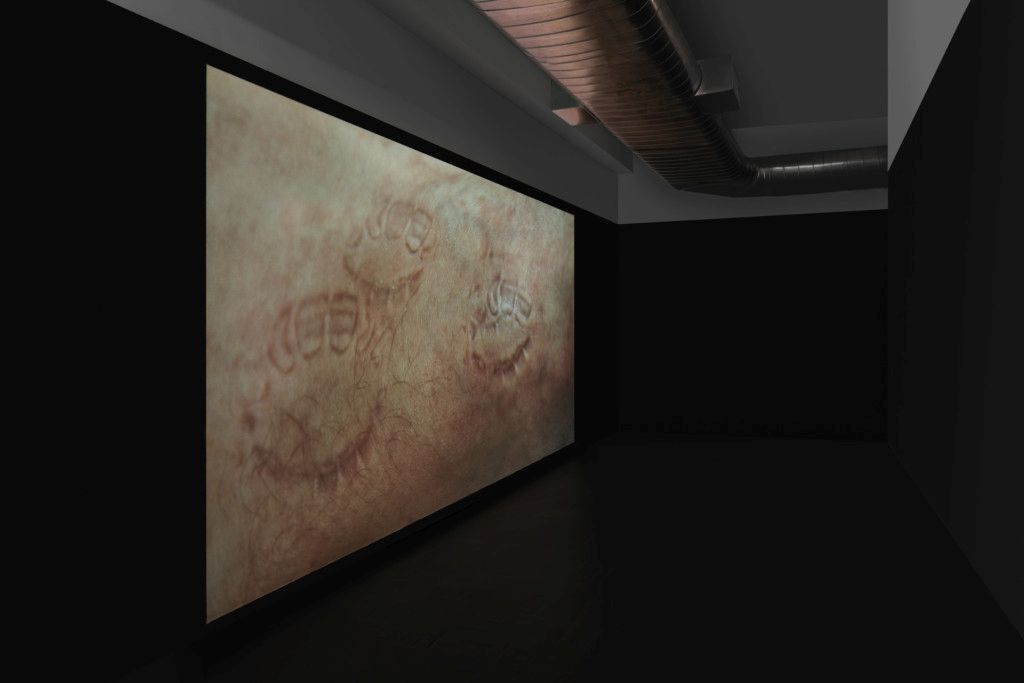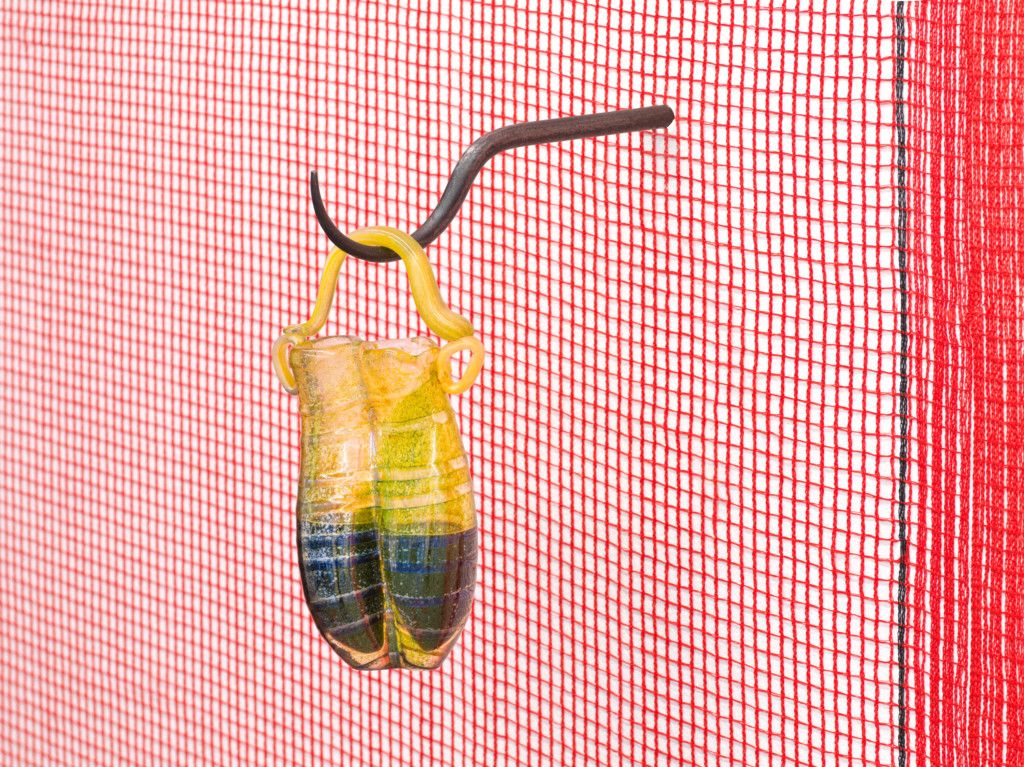Artist: Lukas Hofmann
Title: Skin Come Leather
Venue: Art in General, New York
Curator: Karina Kottova
November 24, 2019–January 31, 2020
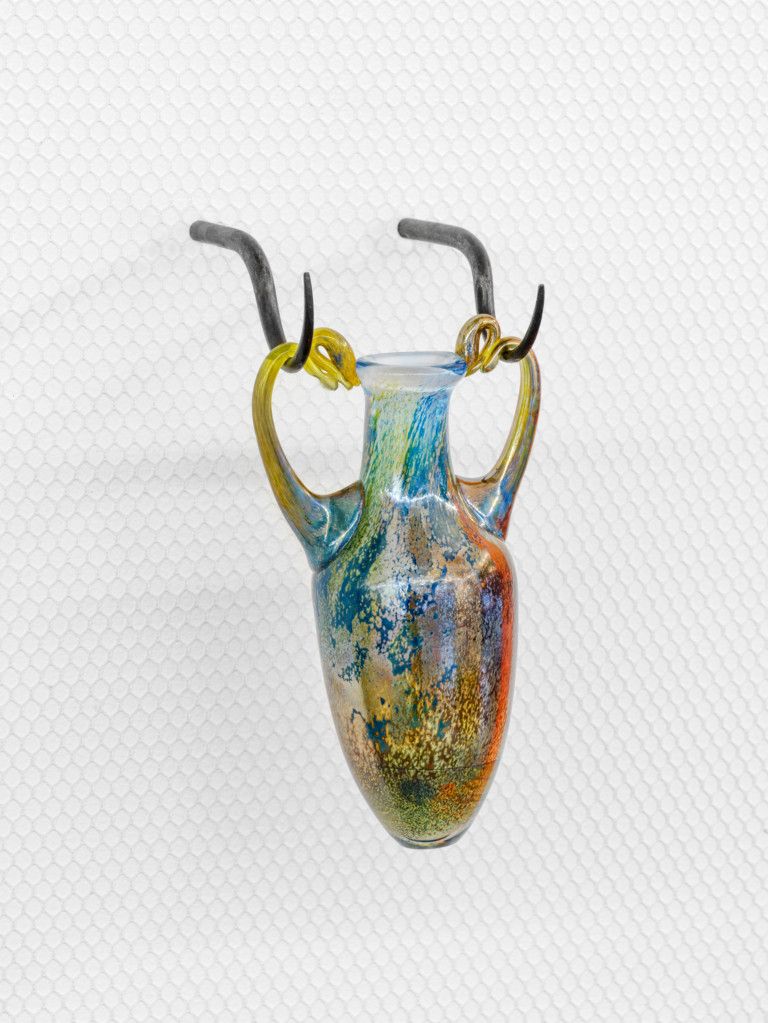
Water of Death Ingredients:
Alcohol denat, Aqua, Achillea millefolium, Cupressus sempervirens, Boswellia carterii, Citrus aurantium.
Water of Life Ingredients:
Sphagnum, Aqua, Alcohol denat, Nardostachys jatamansi, Aquilaria malaccensis, Matricaria chamomilla, Acacia dealbata,Tilia cordata, Resina myrrhae, Myrtus communis, Boswellia sacra, Rosa damascena, Cedrus atlantica, Ocimum sanctum.
Art in General presents a new International Collaboration exhibition opening on November 24, 2019. Czech performance and installation artist Lukas Hofmann presents his first NewYork solo show titled Skin Come Leather at Art in General, commissioned by the curatorial platform Jindrich Chalupecky Society and curated by Karina Kottova. Hofmann’s artistic and performative practice is strongly visual, highly emotional or even obsessive, yet engaged in the second plane—touching upon the aching spots of contemporaneity, as seen through the lens of a generation that inherited this planet in a rather anxious state. His performances, where several actants usually give a breath of life to a carefully set up physical environment, create moments of both extreme tension and vulnerability, inviting audiences to share the deeply embodied feelings of anxiety as well as hope.
Hofmann’s newly commissioned work consisting of video, objects, installation and performance centers around concept of skin conditions, such as eczema, itching, dry skin and others, as a multi-layered metaphor and sphere for interaction, manipulation, (self)violation, sensation, or exploitation. Skin as a membrane or border has been a reappearing theme throughout Hofmann’s practice and the present exhibition investigates its aesthetic, somatic and symbolical layers.
Skin is seen as a semi-translucent membrane, both dividing the bodily self from the rest of the world, and providing access to it; a sphere of the most intimate contact, letting the environmental elements enter the body, holding the body together and yet being so vulnerable to outer powers. Hofmann follows the rudimentary process of turning skin into leather—a commodity—alongside skin examinations and experiments. His new video piece obsessively exposes all these aspects through a degree of consciously mystifying, and consequently disturbing aestheticization and close-up inspection, typical for Hofmann’s artistic process.
The multi-sensorial installation in the gallery space metaphorically stretches out and transforms skin into its urban counterpart: a scaffolding net.The stimuli in the exhibition bring only partial clues—do the climbing holds suggest past or future physical contact, strength or the lack of it? The tinctures of Water of Life and Death are involved in a mysterious process on the edge of medicine and witchcraft. According to local mythology trickling through modern TV fairy tales Lukas Hofmann, Dry Me A River, performance, 2017 that Hofmann grew up with in the post-communist Czech Republic, these liquids were to bring back the dead to life and heal wounds, respectively. Here they act as a fickle element, which might turn the tide of perception. Carried in ancient- like, yet hypermodern glass carafes designed by the artist in collaboration with the glass-making company Lasvit, they carefully balance the line between realms of fetish, commercialized wellness and empowerment.
The physical installation creates a negative space for the live performance, which will be presented at the exhibition opening and documented for its duration as a video work on view inside the exhibition.Typically for Hofmann, a group of several performers will engage in escalated forms of (bodily) presence, pressing onto glass surfaces of the gallery space or exhibited objects, leaving traces, deforming, exchanging remains of breath, which might turn into a momentary song. Art in General will become a two-way portal, where the audience will suddenly find itself observed. Through their intense choreography, Hofmann’s group of actants aim to open and close wounds inflicted by the contemporary condition, causing both restlessness and relief.
Lukas Hofmann (1993) studies at the Academy of Fine Arts in Prague (Studio of Intermedia Work III / Tomas Vanek School). He participated in a study program at the Academy of Arts, Architecture and Design in Prague (Sculpture Studio), at the Korean National University of Arts in Seoul and at M.I Gallery in Berlin. He participated in a residency program at Nisyros, Greece organized by the Prague-based platform Are and is currently a resident of Residency Unlim- ited, NewYork. Also known as Saliva, he expresses himself primarily through performance and “social“ sculptures that often speak in a dialect of the fashion and creative industry. In his situations, he creates curated communities of actors and environments in which he induces a focused atmosphere and egalitarian dynamic. In this way, he communicates a whole range of most current emotions: apathy as well as potentiality of feeling, disappointment and hope. He regularly participates in collective exhibitions and art events in the Czech Republic and internationally; he has presented his work e.g. in the Schinkel Pavillon in Berlin, the National Gallery of Denmark in Copenhagen, Moderna Museet in Stockholm and PLATO Gallery in Ostrava; during Manifesta 11, he performed at Cabaret Voltaire in Zurich. In 2018, he received the Jindrich Chalupecky Award, the most prominent Czech award for visual artists.
Jindrich Chalupecky Society is a platform for Czech post-revolutionary and contemporary art in international context. In collaboration with a number of partner institutions throughout the Czech Republic and internationally, we organize exhibitions, public programs, residencies for artists and curators, educational and publication projects. Since 1990, the Society awards the Jindrich Chalupecky Award for visual artists up to the age of 35.The Society aims to initiate and support innovative and experimental artistic, curatorial and research activities and to contribute to strengthening the role of contemporary Czech art in the local and international environment, including the regions outside the main cultural centers.The Society stands both for significant continuity and flexibility, constantly re-examining its forms and possibilities as an organization that is actively approaching the most contemporary events both on and outside the art scene. Jindrich Chalupecky Society is a non-state non-profit organization based in the building of the Center for Contemporary Arts Prague. Jindrich Chalupecky Society is part of the Feminist Art Institutions initiative and follows its Code of Practice.
